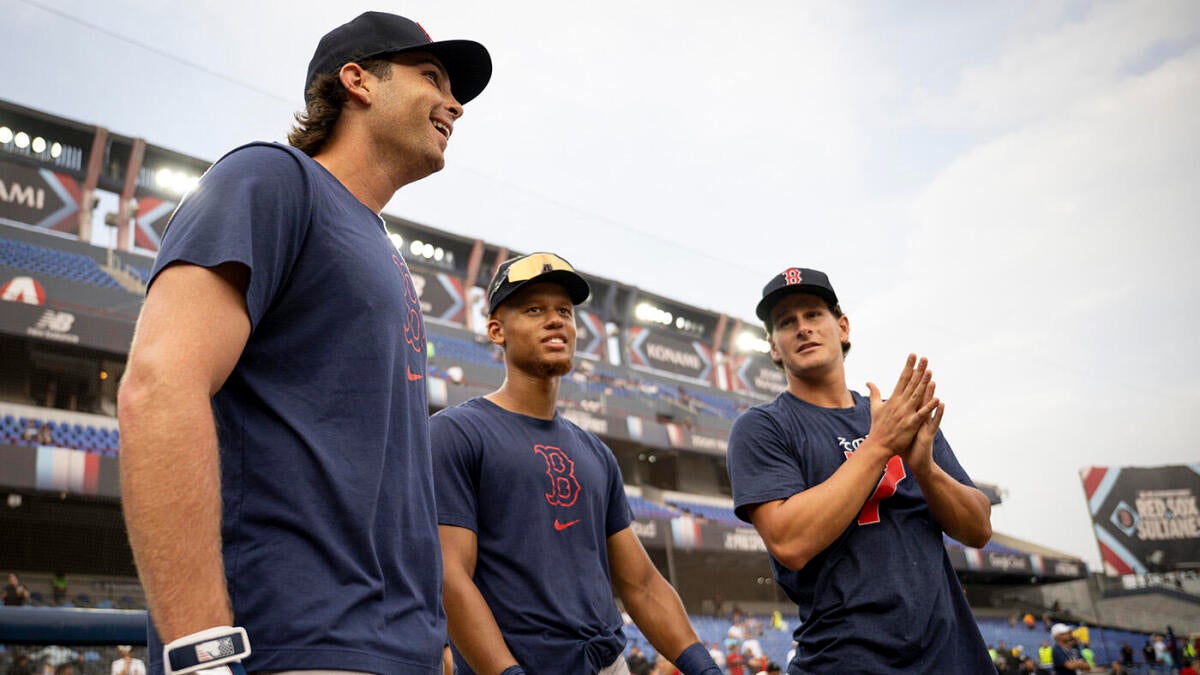The Impact of Triston Casas’ Injury on the Boston Red Sox
A Sudden Setback
The Boston Red Sox found themselves in a tough spot when first baseman Triston Casas sustained a “significant knee injury” during a game against the Minnesota Twins. This unexpected turn of events has not only shaken up the team’s immediate lineup but also sparked conversations about the Red Sox’s strategy for the remainder of the season. The road ahead is filled with questions and possibilities, and navigating this challenge will require careful consideration and strategic decision-making.
The Gravity of Casas’ Injury
Casas’ injury occurred early in the second inning, sending shockwaves through the team and the fanbase. Manager Alex Cora’s description of the injury as “significant” was echoed in Casas’ visible distress as he was stretchered off the field. While the exact nature of the injury remains unclear, one thing is certain: Casas will be sidelined for an extended period. This is a particularly worrying development given Casas’ history of injuries, including a rib injury that kept him out for four months in 2024.
Internal Solutions for First Base
With Casas out of commission, the Red Sox must look within their ranks to fill the void at first base. Several players could potentially step up, each bringing their own unique set of skills and limitations.
Ceddanne Rafaela: The Utility Man
Rafaela has proven to be a versatile player, capable of handling multiple positions and providing a solid defensive presence. However, his offensive contributions have been modest, making him more of a utility player than a primary first baseman. While Rafaela could certainly fill in, he may not be the long-term solution the Red Sox are looking for.
Wilyer Abreu and Rob Refsnyder: The Right Field Duo
Abreu and Refsnyder have been effective in a platoon role in right field, bringing valuable experience and offensive production to the table. However, neither player is a natural fit at first base. Abreu, in particular, has shown flashes of power but has struggled with consistency. Moving either player to first base would be a significant adjustment, and it remains to be seen if they can make the transition seamlessly.
Roman Anthony: The Prospect with Potential
Anthony, a top prospect, has been mentioned as a potential candidate to fill the first base position. However, his development has been hampered by injuries, including a lumbar strain that sidelined him in previous seasons. Promoting Anthony would be a gamble, given his injury history and lack of major league experience. While he has the potential to be a star, the Red Sox must weigh this risk carefully.
Exploring External Options
Given the uncertainty surrounding their internal options, the Red Sox may need to look outside the organization for a solution. Trade rumors have been swirling, with the team reportedly open to trading Casas. This could be a strategic move to acquire a more established first baseman or to address other positional needs.
Potential Trade Targets
The Red Sox could look to acquire a veteran first baseman through a trade. Players like Anthony Rizzo or Josh Bell have been mentioned in trade rumors and could provide a steady presence at first base. However, such moves would require giving up valuable assets, which the Red Sox may be reluctant to do given their contention aspirations. The team will need to carefully consider the potential benefits and drawbacks of pursuing these options.
The Long-Term View
Casas’ injury has raised questions about the Red Sox’s long-term plans at first base. If Casas is out for an extended period, the team may need to reevaluate their roster construction and consider more permanent solutions.
Developing Young Talent
The absence of Casas could provide an opportunity for younger players to step up and gain valuable experience. Prospects like Anthony and Mayer could see increased playing time, allowing the Red Sox to gather more data on their potential. However, this approach comes with risks, as these players may not be ready for the rigors of major league play. The Red Sox will need to strike a delicate balance between developing their young talent and maintaining a competitive roster.
Maintaining Roster Flexibility
The Red Sox may also choose to maintain roster flexibility, keeping an eye on potential trade targets and free agents. This strategy allows them to adapt to changing circumstances and address other positional needs as they arise. By staying flexible, the Red Sox can position themselves to make strategic moves that benefit the team both in the short and long term.
Navigating the Challenge
The injury to Triston Casas has presented the Boston Red Sox with a significant challenge. While the team has internal options to fill the void at first base, none are ideal long-term solutions. The Red Sox must weigh the benefits of promoting prospects against the risks of relying on unproven talent. Trade possibilities exist, but they come with their own set of considerations. Ultimately, the Red Sox will need to make strategic decisions that balance immediate needs with long-term goals. The coming weeks will be crucial in shaping the team’s approach to this challenge, and fans will be watching closely to see how the Red Sox navigate this difficult situation. The path forward is uncertain, but one thing is clear: the Red Sox will need to be creative, adaptable, and resilient in the face of this setback. The team’s ability to overcome this challenge will be a true test of their character and their commitment to success.







